What are eGPUs? The ultimate guide to external graphics cards
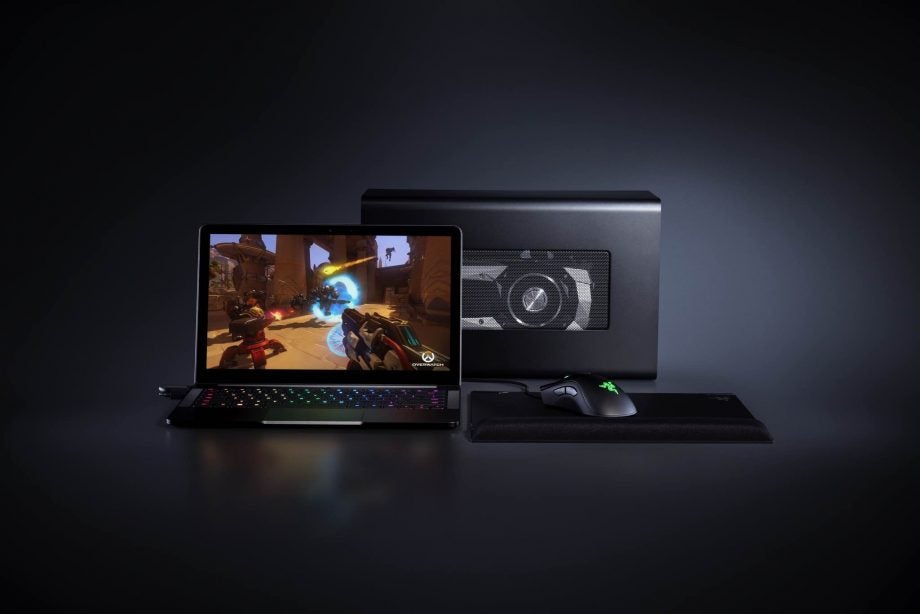
After existing in relative obscurity for a number of years, external graphics cards (eGPUs) are getting tantalisingly close to the mainstream.
But despite the latest MacBooks, iMac Pro and a number of Windows PCs having the ports to support them, eGPUs aren’t quite mainstream just yet.
That’s a shame, because pretty soon the tech could provide the ultimate compromise between the power of a desktop PC and the portability of a laptop.
We’ll get onto explaining how exactly they work, and what equipment you need for an eGPU setup in a moment, but first we’ll outline exactly what they are.
What are eGPUs?
Traditionally, your graphics card (which is responsible for generating the images that appear on your screen) sits happily inside your computer.
The reason for this is pretty simple. The standard connector that a graphics card uses to connect to your motherboard (which these days is PCI Express) is pretty bulky, which would make connecting it to the outside of your desktop or laptop pretty inconvenient.
What’s changed recently is the Thunderbolt 3 connection, which is fast enough to carry a lot of the data of a PCI-E connector in a port that has the same form factor as USB-C.
This means that rather than having your graphics card sit inside your desktop or laptop, you can now have it sit outside of your case and connect to your motherboard using a single slim cable.
Should you use an eGPU?
Although it’s theoretically possible to connect an eGPU to a desktop, it’s with laptops that you’ll see the benefits of the form factor emerge.
Laptops are portable devices, which means that they rarely have space for a full-size graphics card. This often leads to compromises, meaning that laptops with mobile GPUs aren’t as powerful as their desktop counterparts.
Using an external GPU means that you get the best of both worlds. You can use your laptop throughout the course of the day as a portable device, and then plug it into an external graphics card when you have the space and you need the extra power.
The setup also takes up a lot less space. Rather than having an external monitor, keyboard and mouse, all of the essential hardware is concentrated in your laptop, while the external GPU enclosure doesn’t take up much more space than a small form factor PC.
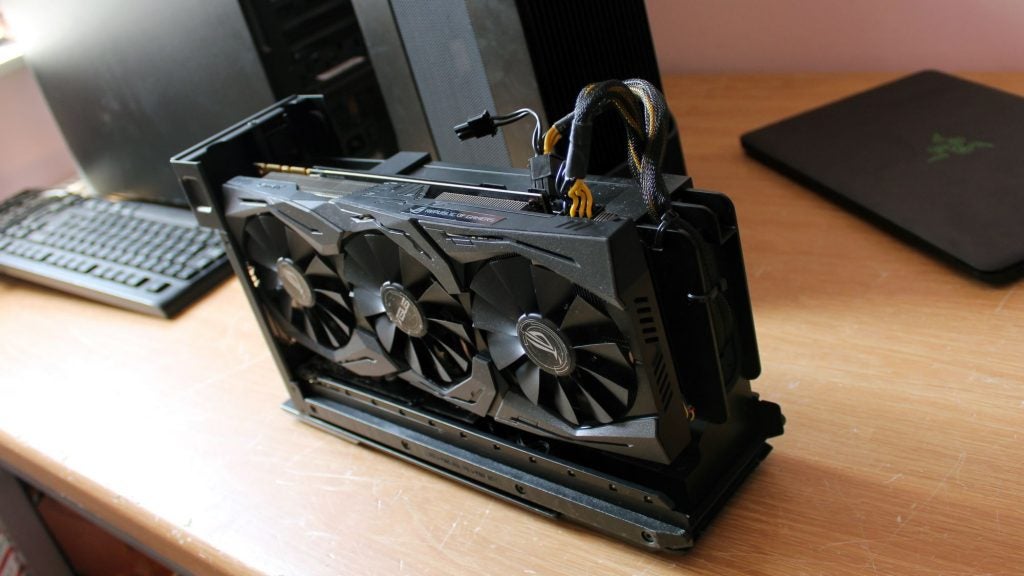
If you’re a student who needs to take a laptop to lectures but still wants the power to play games in the evening when you’re at your desk at home, then an eGPU could provide the ultimate compromise.
As well as offering a decent hybrid solution, eGPUs also take the stress out of upgrading a laptop, and they also bring benefits to all-in-one computers like the iMac.
While a desktop PC might be usable for a decade or more thanks to how easy it is to upgrade its components, laptops tend to have a much shorter shelf life if you want to keep up with the latest games.
An eGPU setup doesn’t completely solve this problem because you still won’t be able to upgrade your laptop’s internal CPU, but being able to upgrade its graphics card will definitely extend its lifespan — especially if gaming is your focus.
It all sounds pretty great, but there are a couple of sticking points at the moment. Let’s start with the hardware…
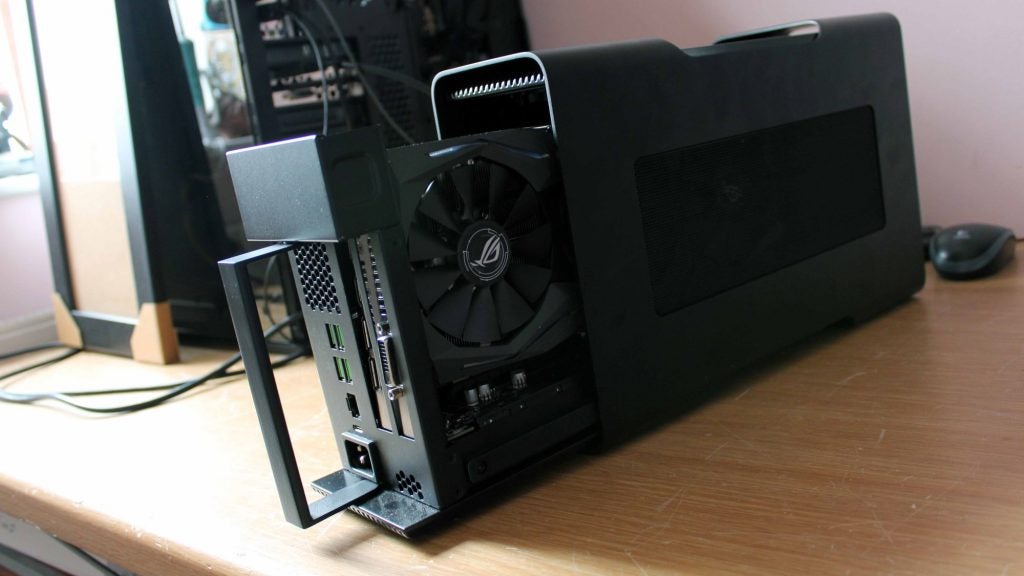
What do I need to get started with an eGPU?
At a minimum you’ll need three pieces of hardware to get an external GPU setup going. You’ll need a laptop, a graphics card, and an external graphics card enclosure.
Maybe one day we’ll get to the point where graphics cards can be both powered and connected to the motherboard over Thunderbolt 3, but for the time being, all the cards from both Nvidia and AMD are designed to draw their power from a dedicated power supply.
This is just one of the reasons why an external graphics card enclosure like the Razer Core is necessary, but aside from powering the card, this enclosure also contains fans to keep it cool, and is equipped with all the ports you need to connect it to your machine.
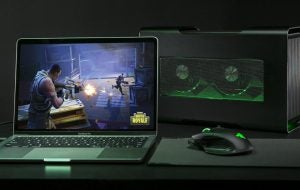
Which hardware supports eGPUs?
Unfortunately, the complications don’t quite end there. At present there are a limited number of laptops that are equipped with the necessary hardware to support external graphics cards, and even then they can be picky about which models of graphics cards they’ll play nice with in an external enclosure.
Probably the most high-profile laptops that support external GPUs are MacBook Pros released since 2016, which received eGPU support in MacOS version 10.13.4. However, these laptops only support GPUs made by AMD, which haven’t quite kept pace with the best offerings from Nvidia in recent years. Apple’s support page has a complete list of compatible hardware.
Unfortunately, at present you can’t use an eGPU on Mac if you’re bootcamping into Windows, which rules out using it to play most modern games, since many only receive Windows releases.
If gaming is more of a concern, then there are an increasing number of Windows laptops that support eGPUs. Unsurprisingly, considering it was an early manufacturer of enclosures, Razer’s recent notebooks support the hardware and Dell has also produced laptops with the functionality.
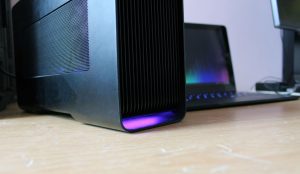
External GPUs vs Internal GPUs: Which are best?
Internal GPUs are still the more powerful option.
While Thunderbolt 3 is fast, it’s still not quite as fast as PCI Express, so there’s a slight bottleneck, which will limit your performance.
Our Razer Core review gives a good overview of the kind of performance difference you’ll see, but depending on the game in question it could come pretty close. Playing Tomb Raider at 1080p for example, you could see a difference between laptop and desktop performance of just 9fps, but when we tried the setup with Witcher 3, we got around half the frames on laptop as when the same graphics card was plugged directly into a desktop motherboard.
Until Thunderbolt catches up with PCI Express, then eGPUs aren’t going to be as quick as their internal desktop counterparts.
But that doesn’t make them useless — they’ll still be far faster than many internal mobile graphics cards. It’s a compromise, but depending on your needs, it might just be a compromise worth making.
Are you considering investing in an eGPU setup? Let us know your thoughts @TrustedReviews


